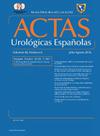Mapeo de las disparidades regionales en la mortalidad por cáncer de testículo en España (2004-2023)
IF 1.2
4区 医学
Q3 UROLOGY & NEPHROLOGY
引用次数: 0
Abstract
Introduction
This study investigates testicular cancer (TC) mortality trends and spatial patterns in Spain, utilizing provincial-level spatial analysis to identify high-risk clusters.
Methods
An ecological study was conducted using TC mortality data (ICD-10 code C62) from the Spanish National Institute of Statistics (2004-2023). Age-standardized mortality rates were calculated using the direct method. Temporal trends were analyzed with Joinpoint regression. Spatial patterns were assessed using standardized mortality ratios, smoothed relative risk, and posterior probabilities through Bayesian hierarchical models. Spatial clustering was examined with Tango's test and Kulldorff's likelihood ratio test.
Results
A total of 909 TC deaths were recorded, with age-standardized mortality rates ranging from 0.14 to 0.26 per 1,000,000 inhabitants. No significant temporal trends were observed. Age-specific mortality showed a bimodal distribution, peaking at ages 35-39 and 85+. The highest standardized mortality ratios were found in Zamora (2.58), Segovia (2.64), and Soria (2.39), while the lowest were in Madrid (0.66) and Barcelona (0.55). Bayesian spatial analysis identified elevated relative risk in Badajoz (1.6), Huelva (1.47), and Sevilla (1.4). Kulldorff's analysis revealed a high-mortality cluster in southwestern Spain (Huelva, Sevilla, Badajoz), with a secondary cluster extending to neighbouring provinces.
Conclusions
While TC mortality in Spain remained stable, significant regional disparities exist. High-risk provinces and mortality clusters highlight potential inequalities in healthcare access, socioeconomic conditions, and environmental exposures.

西班牙睾丸癌死亡率区域差异图(2004-2023年)
本研究调查了西班牙睾丸癌(TC)死亡率趋势和空间模式,利用省级空间分析来确定高危集群。方法采用西班牙国家统计局2004-2023年TC死亡率数据(ICD-10代码C62)进行生态学研究。采用直接法计算年龄标准化死亡率。用关节点回归分析时间趋势。通过贝叶斯层次模型,使用标准化死亡率、平滑相对风险和后验概率来评估空间格局。空间聚类分析采用Tango检验和Kulldorff似然比检验。结果共有909例TC死亡,年龄标准化死亡率为0.14 ~ 0.26 / 100万居民。没有观察到明显的时间趋势。按年龄划分的死亡率呈双峰分布,在35-39岁和85岁以上达到高峰。标准化死亡率最高的是萨莫拉(2.58)、塞戈维亚(2.64)和索里亚(2.39),最低的是马德里(0.66)和巴塞罗那(0.55)。贝叶斯空间分析发现巴达霍斯(1.6)、韦尔瓦(1.47)和塞维利亚(1.4)的相对危险度较高。Kulldorff的分析显示,西班牙西南部(韦尔瓦、塞维利亚、巴达霍斯)有一个高死亡率聚集群,第二个聚集群延伸到邻近省份。结论西班牙TC死亡率保持稳定,但存在显著的地区差异。高风险省份和死亡率集群突出了医疗保健获取、社会经济条件和环境暴露方面的潜在不平等。
本文章由计算机程序翻译,如有差异,请以英文原文为准。
求助全文
约1分钟内获得全文
求助全文
来源期刊

Actas urologicas espanolas
UROLOGY & NEPHROLOGY-
CiteScore
1.90
自引率
0.00%
发文量
98
审稿时长
46 days
期刊介绍:
Actas Urológicas Españolas is an international journal dedicated to urological diseases and renal transplant. It has been the official publication of the Spanish Urology Association since 1974 and of the American Urology Confederation since 2008. Its articles cover all aspects related to urology.
Actas Urológicas Españolas, governed by the peer review system (double blinded), is published online in Spanish and English. Consequently, manuscripts may be sent in Spanish or English and bidirectional free cost translation will be provided.
 求助内容:
求助内容: 应助结果提醒方式:
应助结果提醒方式:


